- Preparing Strawberry Seedlings
- 1. Selecting Healthy Seedlings
- 2. Providing Adequate Sunlight
- 3. Preparing the Soil
- 4. Watering the Seedlings
- 5. Transplanting Carefully
- 6. Mulching
- 7. Watering and Fertilizing
- 8. Protecting from Frost
- Preparation for Autumn Planting
- 1. Choose the Right Varieties
- 2. Prepare the Soil
- 3. Planting Depth
- 4. Watering
- 5. Mulching
- 6. Protection from Frost
- 7. Fertilizing
- Tips for Successful Rooting
- Importance of Transplanting
- Promotes Strong Root Development
- Prevents Overcrowding
- Allows for Adaptation to Outdoor Conditions
- Facilitates Weeding and Pest Control
- Ensures Proper Plant Spacing
- Choosing the Right Location
- Preparing the Soil
- 1. Choose the Right Location
- 2. Remove Weeds and Debris
- 3. Test and Amend the Soil
- 4. Digging and Loosening the Soil
- 5. Adding Fertilizer
- 6. Watering the Soil
- 7. Mulching
- Caring for Strawberry Seedlings
- 1. Watering
- 2. Mulching
- 3. Fertilizing
- 4. Weed Control
- 5. Pest and Disease Management
- 6. Supporting the Plants
- 7. Pruning
- 8. Harvesting
- Protecting Against Pest and Diseases
- 1. Monitor for Pest Activity
- 2. Clean and Sanitize
- 3. Provide Proper Air Circulation
- 4. Mulch with Straw
- 5. Use Natural Pest Control Methods
- 6. Watering Practices
- 7. Crop Rotation
- 8. Regularly Fertilize
- Harvesting and Enjoying Strawberries
- 1. Harvesting
- 2. Storing
- 3. Eating Fresh
- 4. Making Preserves
- 5. Freezing
- 6. Baking
- 7. Pairing with Other Foods
- Question-answer:
- When is the best time to plant strawberry seedlings in the autumn?
- What are some tips for preparing strawberry seedlings for autumn planting?
- How should I choose healthy strawberry seedlings for autumn planting?
- What should I do to prepare the soil for planting strawberry seedlings in the autumn?
- How often should I water my strawberry seedlings after transplanting in the autumn?
- Should I protect my strawberry seedlings from frost and freezing temperatures in the autumn?
- Can I fertilize my strawberry seedlings after transplanting them in the autumn?
- Video: 7 Tips To Increase Your Strawberry Yields
Autumn is the perfect time to prepare strawberry seedlings for planting. With the right care and attention, these seedlings can quickly establish roots and thrive in the upcoming growing season. However, it’s important to take certain steps to ensure successful rooting after transplanting.
Firstly, it’s crucial to select healthy strawberry seedlings from a reputable source. Look for strong, disease-free plants with well-developed roots. These seedlings will have a higher chance of adapting to their new environment and growing vigorously.
Before transplanting, it is advisable to pre-soak the seedlings’ roots in a rooting hormone solution. This will encourage faster root development and improve the likelihood of successful establishment. Additionally, trimming any overly long or damaged roots can help the seedlings to focus their energy on new root growth.
Once ready for transplanting, it’s important to choose a well-draining location with full sun exposure. Strawberry plants require at least six to eight hours of direct sunlight each day for optimal growth. It is also crucial to prepare the soil by incorporating organic matter, such as compost or well-rotted manure, to improve soil fertility and moisture retention.
By following these tips and providing proper care, you can ensure successful rooting and establish healthy strawberry plants that will produce abundant fruit in the next growing season. With a little effort and patience, you will be able to enjoy the delicious taste of homegrown strawberries year after year!
Preparing Strawberry Seedlings
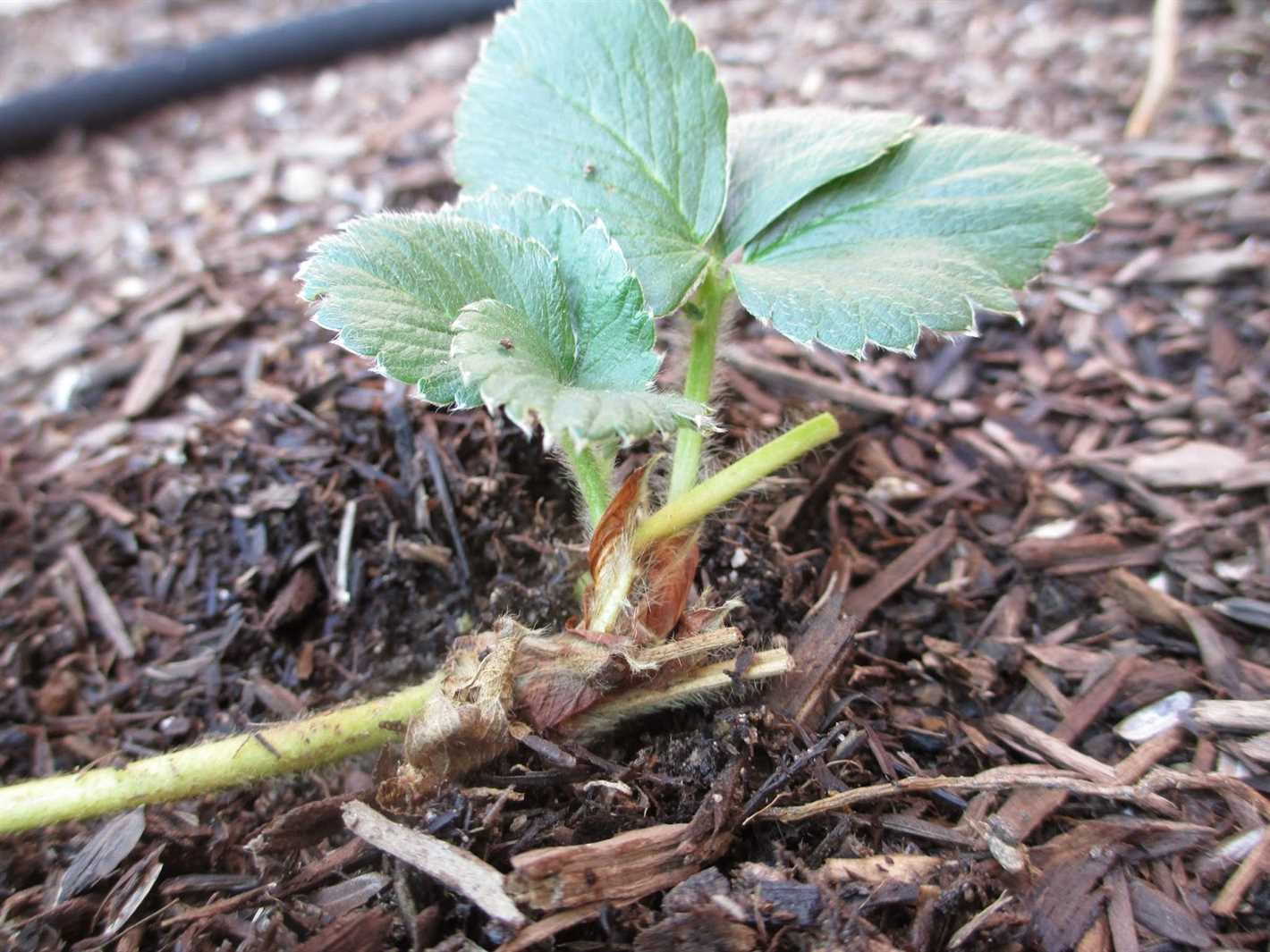
Preparing strawberry seedlings before autumn planting is an important step to ensure their successful rooting after transplanting. By following a few tips, you can help the seedlings establish strong roots and increase their chances of thriving in the colder months. Here are some steps to consider:
1. Selecting Healthy Seedlings
Choose seedlings that are free from diseases or pests. Look for ones with vibrant green leaves and strong stems. Avoid seedlings with yellowing or wilting leaves.
2. Providing Adequate Sunlight
Strawberry plants require at least 6-8 hours of direct sunlight daily. Before transplanting, find an area in your garden that receives sufficient sunlight and ensure that the seedlings will have access to it.
3. Preparing the Soil
Prepare the soil in the planting area by loosening it and removing any weeds or rocks. Add organic matter, such as compost or well-rotted manure, to improve soil fertility and drainage.
4. Watering the Seedlings
Before transplanting the seedlings, water them thoroughly to ensure good hydration. This will help reduce transplant shock and aid in the establishment of new roots.
5. Transplanting Carefully
When transplanting the seedlings, dig holes that are wide enough to accommodate their roots without bending or crowding them. Place the seedlings in the holes, making sure the crown is level with the soil surface. Gently firm the soil around the roots to eliminate air pockets.
6. Mulching
Apply a layer of organic mulch around the strawberry plants to help retain moisture, suppress weed growth, and regulate soil temperature. Pine straw, wood chips, or straw can be used as mulch materials.
7. Watering and Fertilizing
Water the newly transplanted seedlings immediately after planting and keep the soil evenly moist during their establishment period. Avoid overwatering, as this can lead to root rot. Apply a balanced fertilizer according to package instructions to provide essential nutrients for healthy growth.
8. Protecting from Frost
If frost is expected before the plants are fully established, cover them with frost blankets or row covers to protect them from damage. Remove the covers during the day to allow sunlight and airflow.
By following these tips, you can prepare your strawberry seedlings for autumn planting and give them the best chance of developing strong roots and thriving in the colder months. Remember to monitor their progress, water them regularly, and address any issues promptly to ensure a successful harvest in the coming spring.
Preparation for Autumn Planting
Preparing strawberry seedlings for autumn planting is an important step in ensuring successful rooting after transplanting. By following a few key tips, you can help your strawberry plants establish strong roots and thrive in their new location.
1. Choose the Right Varieties
When selecting strawberry seedlings for autumn planting, it’s important to choose varieties that are well-suited for your climate. Look for varieties that are known for their winter hardiness and disease resistance. This will help ensure that your plants can withstand the colder temperatures and harsh conditions of autumn and winter.
2. Prepare the Soil
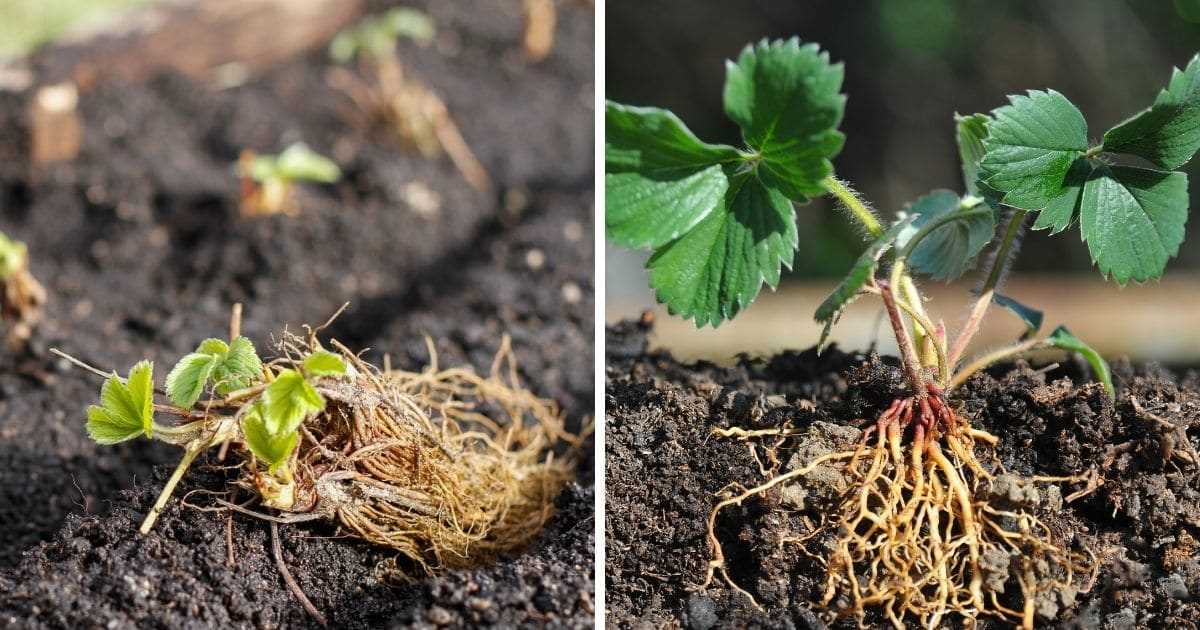
Before planting your strawberry seedlings, prepare the soil by removing any weeds or grass. Loosen the soil with a garden fork or tiller to improve drainage and aeration. Add compost or well-rotted manure to enrich the soil with nutrients.
3. Planting Depth
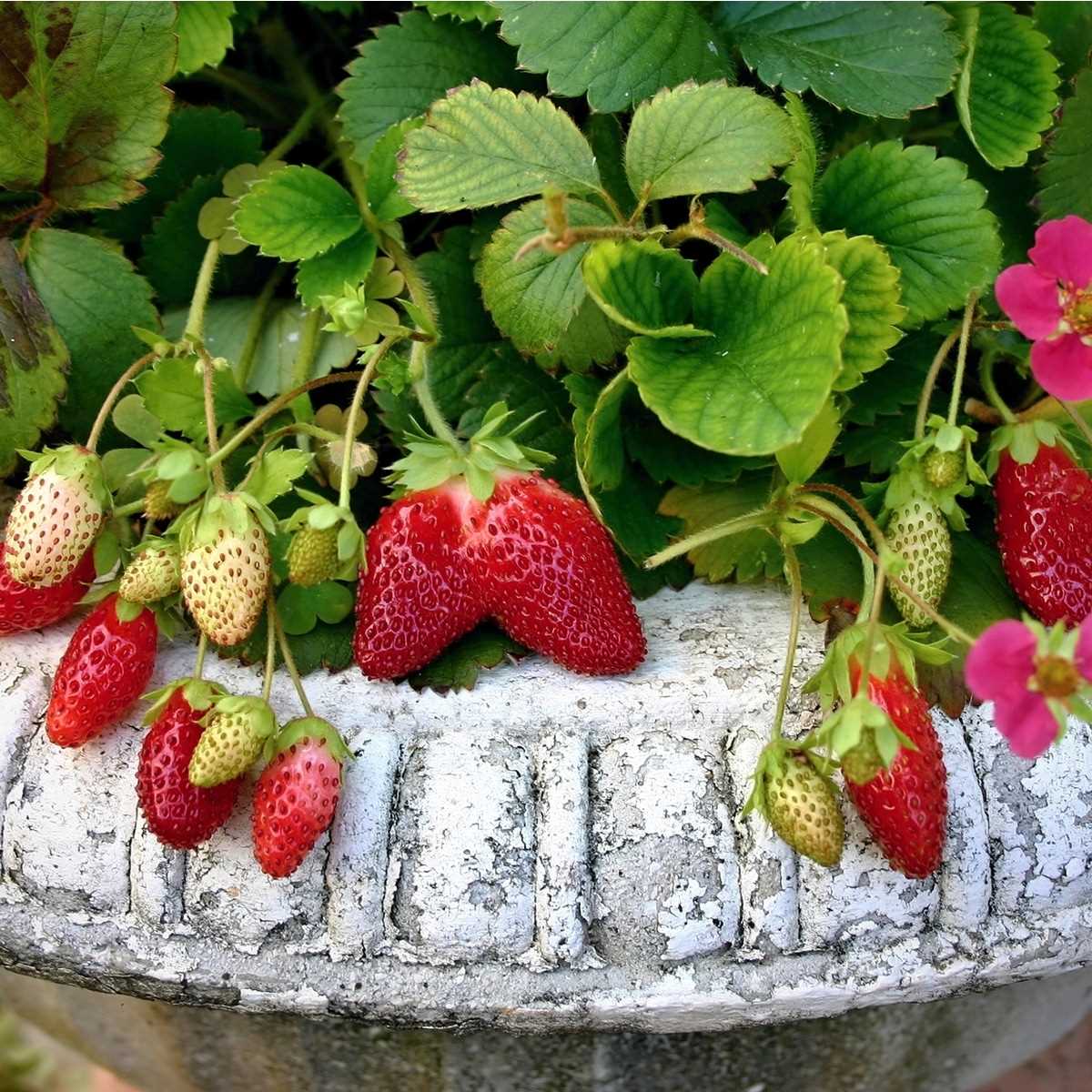
When planting your strawberry seedlings, make sure to set them at the right depth. Plant them shallow, with the crown of the plant at ground level and the roots spread out. Avoid planting them too deep, as this can lead to rotting and poor growth.
4. Watering
After transplanting your strawberry seedlings, be sure to provide them with adequate water. Keep the soil consistently moist but not waterlogged. Water deeply to encourage the roots to grow down into the soil.
5. Mulching
Apply a layer of mulch around your strawberry plants to help conserve moisture, suppress weed growth, and protect the roots from temperature fluctuations. Organic mulch, such as straw or wood chips, is ideal for strawberries.
6. Protection from Frost
As autumn progresses and temperatures start to drop, it’s important to protect your strawberry plants from frost. Cover them with a layer of frost cloth or an old sheet during cold nights to prevent frost damage.
7. Fertilizing
Provide your strawberry plants with a balanced fertilizer to promote healthy growth. Apply a slow-release fertilizer according to the manufacturer’s instructions. Avoid over-fertilizing, as this can lead to excessive foliage growth and fewer flowers.
By following these preparation tips, you can ensure that your strawberry seedlings are ready to thrive in their new location come autumn. With proper care and maintenance, your strawberry plants will reward you with a bountiful harvest.
Tips for Successful Rooting
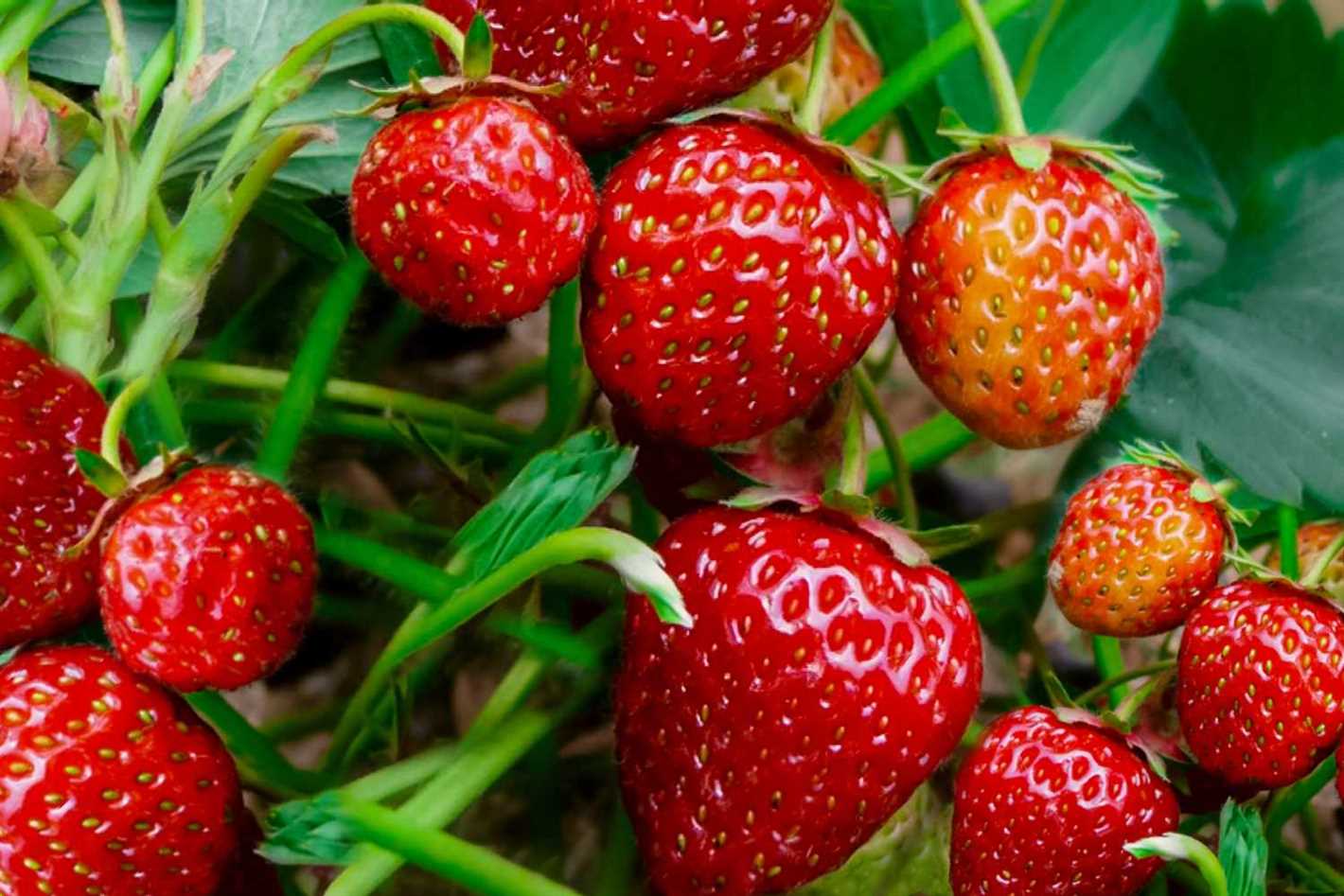
When preparing strawberry seedlings for autumn planting, ensuring successful rooting is crucial for the plants’ growth and development. Here are some tips to help you achieve successful rooting:
- Choose high-quality seedlings: Select healthy seedlings with strong root systems and no signs of disease or pests.
- Prepare the soil: Before planting, make sure the soil is well-drained and rich in organic matter. Remove any weeds and break up any clumps to create a loose and friable texture.
- Plant at the right depth: When transplanting the seedlings, ensure that the crown is level with the soil surface. Planting too deep can hinder root development, while planting too shallow may expose the roots and affect their growth.
- Water adequately: After planting, water the seedlings thoroughly to help settle the soil and ensure good soil-to-root contact. Water regularly to keep the soil moist but not waterlogged.
- Provide proper drainage: Avoid planting strawberry seedlings in areas with poor drainage, as excess water can lead to root rot. If necessary, improve drainage by adding organic matter or creating raised beds.
- Apply mulch: Mulching around the seedlings helps conserve moisture, suppress weeds, and maintain a stable soil temperature. Use organic materials such as straw or wood chips and apply a layer about two inches thick.
- Fertilize appropriately: Apply a balanced fertilizer formulated for strawberries according to the package instructions. Avoid over-fertilizing, as this can lead to excessive leaf growth at the expense of root development.
- Protect from extreme temperatures: Strawberry seedlings are sensitive to extreme temperatures. Provide shade during hot days and use row covers or other protective structures to shield the plants from frost or freezing temperatures.
- Monitor for pests and diseases: Regularly inspect the seedlings for any signs of pests or diseases. Promptly address any issues to prevent them from impacting root growth.
By following these tips, you can increase the chances of successful rooting for your strawberry seedlings, setting them up for healthy growth and abundant fruit production.
Importance of Transplanting
Transplanting is an essential step in the process of growing strawberry seedlings. It involves moving the young plants from their initial containers or trays to their final outdoor growing location. This process is crucial for several reasons:
Promotes Strong Root Development
Transplanting allows the strawberry seedlings to establish a stronger root system. When the plants are moved to a larger space, their roots have more room to spread out and grow. This improves nutrient absorption and water uptake, leading to healthier and more vigorous plants.
Prevents Overcrowding
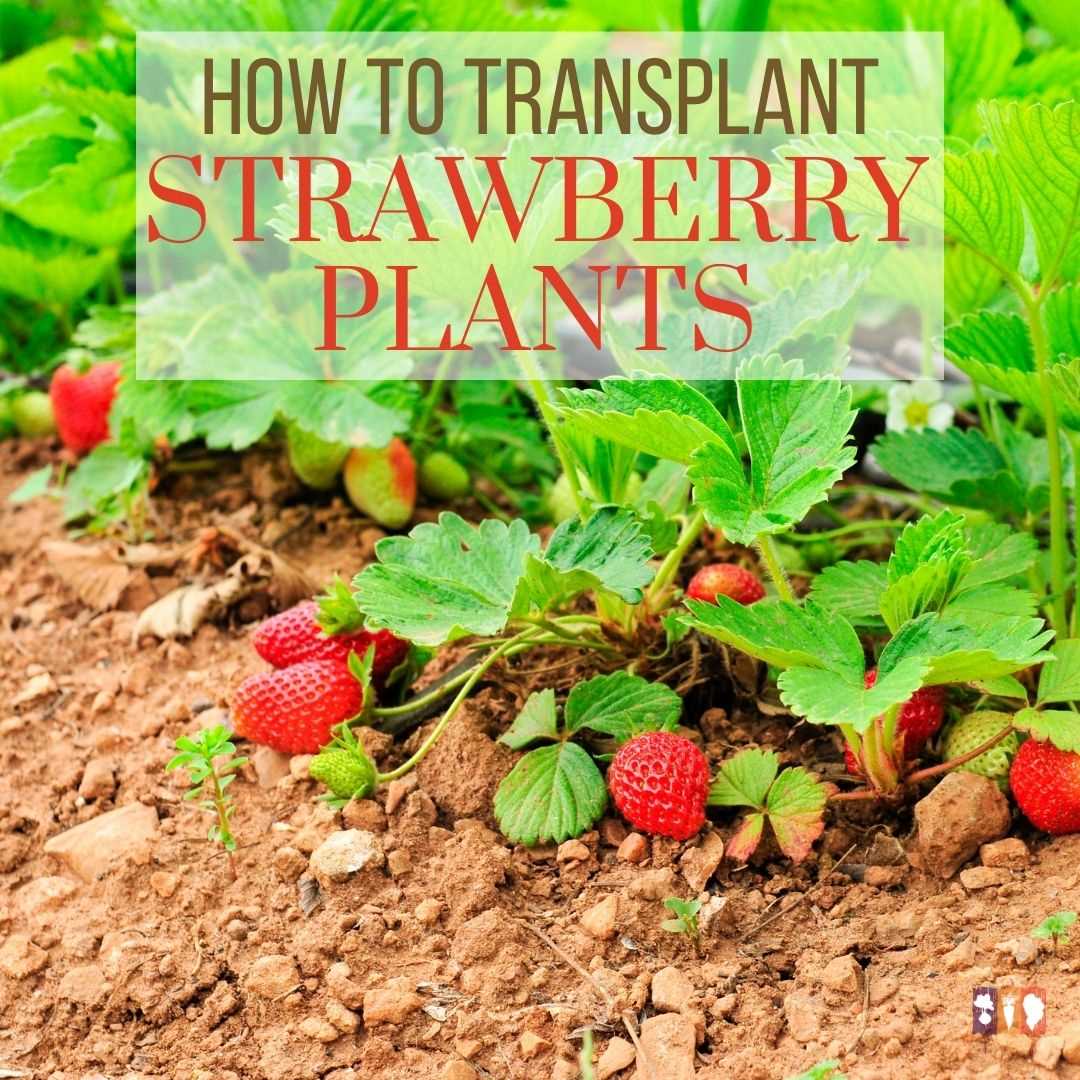
Transplanting helps prevent overcrowding, which can occur when seedlings are kept in small containers for too long. Overcrowding can lead to competition for resources, such as sunlight, water, and nutrients. By transplanting the seedlings into larger pots or outdoor beds, you can ensure that each plant has enough space to grow and thrive.
Allows for Adaptation to Outdoor Conditions
Moving the seedlings from a controlled indoor environment to the outdoors is an important step in their growth process. Transplanting helps the plants acclimate to the outdoor temperature, humidity, and light conditions. This prepares them for the challenges they will face in their final growing location and increases their chances of survival.
Facilitates Weeding and Pest Control
Transplanting makes it easier to control weeds and pests that could harm the strawberry plants. When the seedlings are in smaller containers, it is easier to spot and remove any unwanted plants or pests before they have a chance to establish themselves. Additionally, transplanting allows for easier application of organic or chemical pest control methods, if necessary.
Ensures Proper Plant Spacing
Transplanting allows you to space out your strawberry plants more effectively. Proper plant spacing is crucial for their overall health and productivity. By adequately spacing the seedlings, you prevent them from competing for resources and ensure that each plant has enough room to grow and produce abundant fruit.
In conclusion, transplanting is a vital step in preparing strawberry seedlings for autumn planting. It promotes strong root development, prevents overcrowding, and allows the plants to adapt to outdoor conditions. It also facilitates weeding and pest control and ensures proper plant spacing. By following these tips, you can ensure the successful rooting and growth of your strawberry seedlings.
Choosing the Right Location
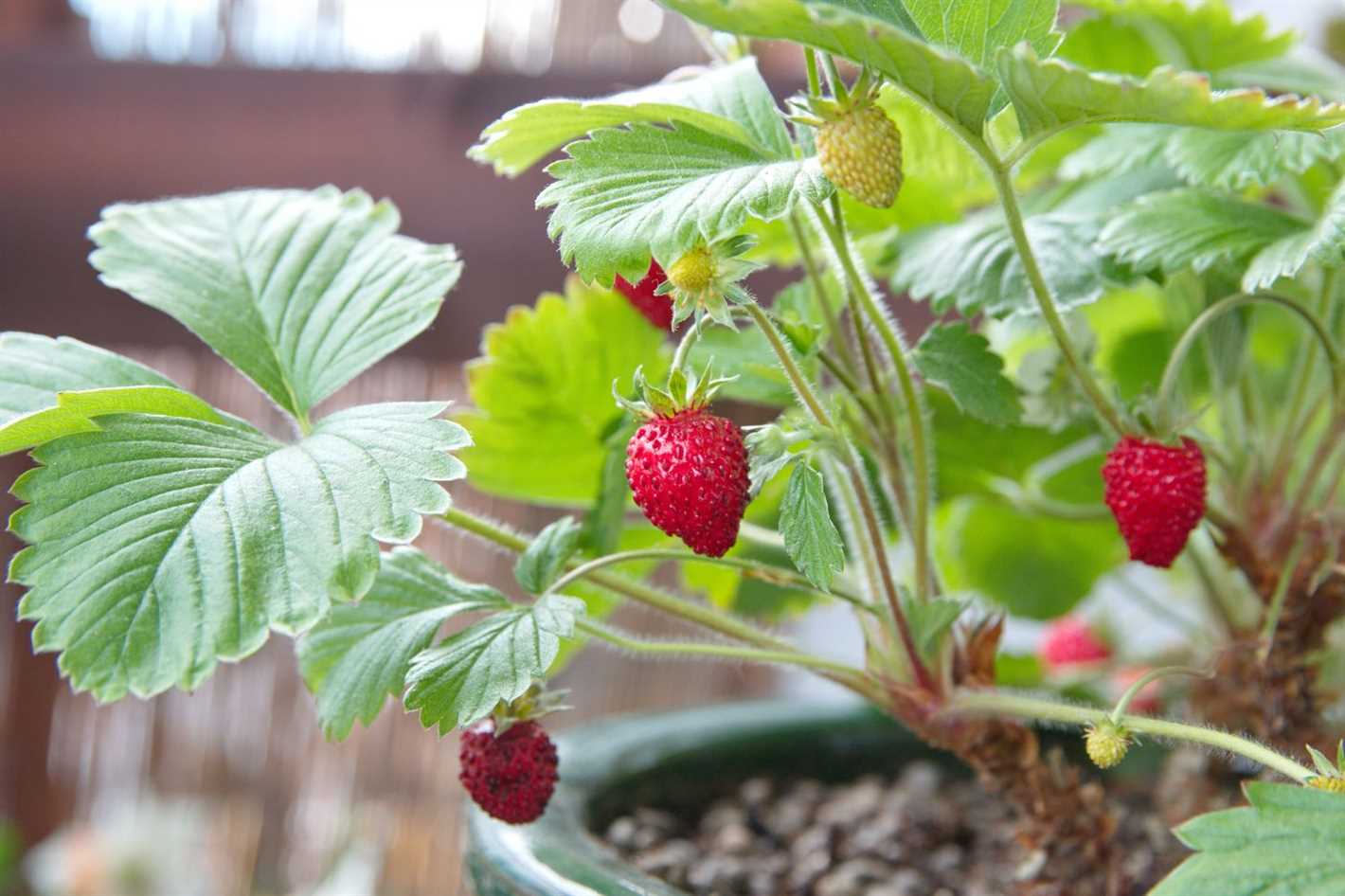
When preparing strawberry seedlings for autumn planting, it is essential to choose the right location for successful growth and fruit production. Here are some factors to consider when selecting the perfect spot for your strawberry plants:
- Full Sunlight Exposure: Strawberry plants thrive in full sunlight, so it is crucial to choose a location that receives at least 6 to 8 hours of direct sunlight per day.
- Soil Type: Strawberries prefer well-draining soil with a pH level between 5.5 and 6.5. Avoid areas with heavy clay or waterlogged soil, as this can lead to root rot and other plant diseases.
- Adequate Drainage: Ensure that the chosen location has good drainage to prevent water from pooling around the roots. Waterlogged soil can cause root rot and other fungal diseases.
- Protection from Strong Winds: While strawberry plants enjoy sunlight, they can be vulnerable to strong winds. Planting them in an area protected from strong gusts will help prevent damage to the plants and their delicate flowers.
- Proximity to Water Source: Strawberries require regular watering, especially during the initial stages of growth and fruit development. Choose a location that is convenient to water to ensure consistent irrigation.
By considering these factors when choosing the right location for your strawberry seedlings, you can ensure they have the best chance for successful rooting and healthy growth.
Preparing the Soil
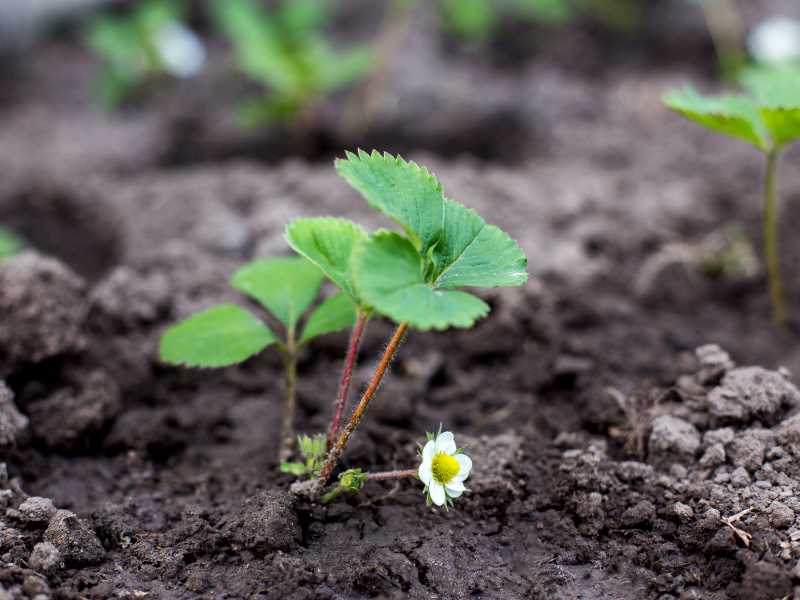
Before planting strawberry seedlings in autumn, it is important to prepare the soil to ensure optimal conditions for rooting and growth. Here are some steps to follow when preparing the soil:
1. Choose the Right Location
Select a location with well-drained soil and full sun exposure. Strawberry plants thrive in soil that is slightly acidic, with a pH level between 5.5 and 6.8. Avoid areas with heavy clay soil or those prone to waterlogging.
2. Remove Weeds and Debris
Clear the area of any weeds, grass, or debris. Weeds can compete with the strawberry plants for nutrients and water. Removing them helps prevent any unwanted competition.
3. Test and Amend the Soil
Test the soil to determine its pH and nutrient levels. This can be done using a soil testing kit or by sending a sample to a laboratory. Based on the results, you may need to amend the soil. If the pH is too low, add pulverized lime to raise it. If the pH is too high, add sulfur or another acidifying agent.
Additionally, incorporate organic matter such as compost or well-rotted manure into the soil. This improves soil structure, drainage, and fertility.
4. Digging and Loosening the Soil
Use a shovel or a garden fork to dig and loosen the soil to a depth of at least 8-10 inches. This helps create a loose, aerated soil structure that promotes root growth and water infiltration.
5. Adding Fertilizer
Add a balanced slow-release fertilizer into the soil according to the package instructions. This provides essential nutrients for the developing strawberry plants.
6. Watering the Soil
Water the soil thoroughly after preparing it. This helps settle the soil and ensures that it is evenly moist for the new seedlings.
7. Mulching
Apply a layer of mulch around the strawberry seedlings to help conserve moisture, suppress weeds, and regulate soil temperature. Straw, wood chips, or shredded leaves make excellent mulching materials.
By following these steps, you can create a favorable growing environment for your strawberry seedlings and increase the chances of successful rooting and growth after transplantation.
Caring for Strawberry Seedlings
1. Watering
Watering is one of the most important aspects of caring for strawberry seedlings. It is crucial to keep the soil consistently moist, but not waterlogged. This can be achieved by watering the seedlings regularly, making sure to thoroughly saturate the soil. However, be careful not to overwater as it can lead to root rot.
2. Mulching
Mulching is beneficial for strawberry seedlings as it helps to retain moisture in the soil, prevent weed growth, and regulate soil temperature. Apply a layer of organic mulch, such as straw or wood chips, around the seedlings, making sure to leave a small space around the base of each plant to prevent crown rot.
3. Fertilizing
Fertilizing is important for strawberry seedlings to promote healthy growth and fruit production. Use a balanced fertilizer, such as a 10-10-10 or an organic option, following the recommended dosage instructions. Apply the fertilizer around the base of the seedlings, taking care not to allow it to come into direct contact with the leaves or stems.
4. Weed Control
Keeping the area around the strawberry seedlings free from weeds is crucial as weeds can compete for nutrients and water. Regularly inspect the bed and remove any weeds by hand, being careful not to disturb the seedlings’ roots. Mulching can also help to suppress weed growth.
5. Pest and Disease Management
Strawberry seedlings can be susceptible to various pests and diseases, such as aphids, slugs, and powdery mildew. Regularly inspect the plants for any signs of pests or diseases and take appropriate measures to control them. This may include using organic pest control methods or applying fungicides if necessary.
6. Supporting the Plants
As the strawberry plants grow, they may require support to prevent them from sprawling on the ground. Use stakes or cages to provide support and keep the plants upright. This will help to improve air circulation, reduce the risk of diseases, and make it easier to harvest the fruits.
7. Pruning
Pruning is necessary to maintain the health and productivity of strawberry plants. Remove any yellow or damaged leaves, as well as runners that are not needed for propagation. This will help to enhance air circulation, prevent overcrowding, and redirect the plant’s energy towards fruit production.
8. Harvesting
Once the strawberry plants start producing fruits, it is important to harvest them regularly to maintain plant vigor and encourage continued fruiting. Harvest ripe strawberries by gently plucking them from the plants, being careful not to damage the delicate fruit.
Protecting Against Pest and Diseases
Pests and diseases can severely impact the health of strawberry seedlings and reduce their chances of successful rooting after transplanting. It is essential to take preventative measures to protect your plants from pests and diseases. Here are some tips to help you protect your strawberry seedlings:
1. Monitor for Pest Activity
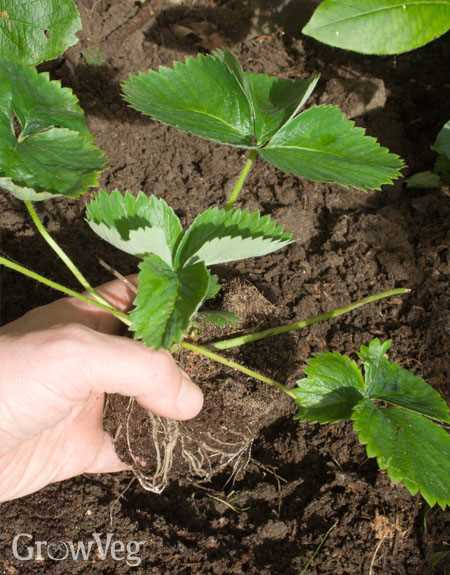
Regularly inspect your strawberry seedlings for signs of pest activity. Look for chewed leaves, wilting, or discolored foliage. Common pests that affect strawberries include aphids, slugs, snails, and spider mites. Early detection can help you take appropriate action before the pests cause significant damage.
2. Clean and Sanitize
Maintain clean gardening practices to prevent the spread of diseases. Remove any plant debris, fallen leaves, or dead plant material from the growing area. Sanitize your gardening tools regularly to avoid transferring diseases from one plant to another.
3. Provide Proper Air Circulation
Ensure that your strawberry seedlings have adequate air circulation. Good airflow helps prevent the buildup of moisture, which can lead to fungal diseases. Avoid overcrowding the seedlings and space them out appropriately.
4. Mulch with Straw
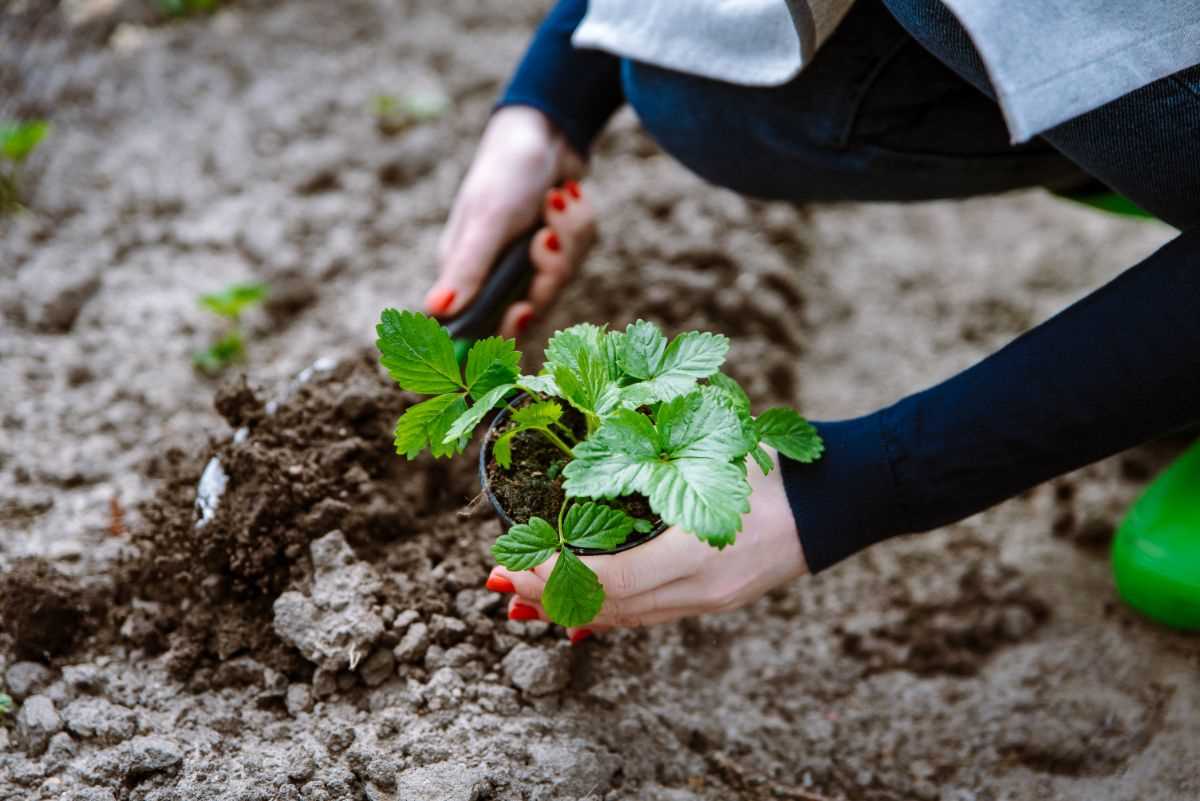
Mulching with straw can help deter pests and diseases. Straw acts as a barrier between the soil and the plants, reducing the likelihood of soil-borne diseases reaching the seedlings. Additionally, it helps conserve moisture and suppress weed growth.
5. Use Natural Pest Control Methods
Avoid using harsh chemical pesticides that can harm beneficial insects and the environment. Instead, choose natural pest control methods to manage pests. For example, attract beneficial insects like ladybugs and lacewings, which feed on aphids and other pests. Introduce organic pest control products if necessary.
6. Watering Practices
Water your strawberry seedlings carefully to prevent overwatering, which can lead to root rot. Use irrigation methods that minimize water contact with the foliage to reduce the risk of foliar diseases. Water in the morning to allow the leaves to dry during the day.
7. Crop Rotation
Implement a crop rotation system for your strawberry plants. Do not plant strawberries in the same spot year after year. Crop rotation helps reduce the build-up of pests and diseases in the soil, ensuring healthier plants.
8. Regularly Fertilize
Provide your strawberry seedlings with regular fertilization to promote healthy growth and enhance their resistance to pests and diseases. Use a balanced fertilizer suitable for strawberries and follow the recommended application rates.
By following these tips, you can significantly improve the chances of successful rooting for your strawberry seedlings and safeguard them against pests and diseases. Regular monitoring, cleanliness, proper air circulation, and natural pest control methods will help ensure healthier plants and higher yields.
Harvesting and Enjoying Strawberries
Strawberries are not only delicious but also a versatile fruit that can be enjoyed in a variety of ways. Whether you grow your own or buy them from a local market, here are some tips for successfully harvesting and enjoying strawberries.
1. Harvesting
When it comes to harvesting strawberries, timing is crucial. You want to wait until the berries are fully ripe to ensure maximum sweetness and flavor. Look for berries that are fully red and firm to the touch. Gently pluck them from the plant, being careful not to bruise or damage the fruit.
2. Storing
It’s best to eat strawberries as soon as possible after harvesting, as they can quickly spoil. If you need to store them, place them in a shallow container lined with paper towels to absorb any excess moisture. Keep them in the refrigerator and use them within a few days for the best taste and texture.
3. Eating Fresh
One of the simplest and most enjoyable ways to eat strawberries is to enjoy them fresh. Rinse them gently under cool water to remove any dirt or debris, then eat them as is or try dipping them in melted chocolate for an extra decadent treat. You can also slice them and add them to cereal, yogurt, or salads for a burst of flavor.
4. Making Preserves
If you have a surplus of strawberries, consider making homemade preserves. Start by washing and hulling the berries, then cook them down with sugar and lemon juice until thickened. Pour the preserves into sterilized jars and process them in a hot water bath to seal. Enjoy the preserves on toast, in yogurt, or as a topping for ice cream.
5. Freezing
To enjoy strawberries all year round, consider freezing them. Start by washing and hulling the berries, then place them in a single layer on a baking sheet lined with parchment paper. Freeze the berries until firm, then transfer them to a freezer-safe bag or container. Frozen strawberries are great for smoothies, baking, or adding to cereal.
6. Baking
Strawberries can add a sweet and tangy flavor to a variety of baked goods. Try incorporating them into muffins, cakes, or pies for a delicious twist. You can also make strawberry shortcake by layering sliced strawberries and whipped cream on a biscuit or sponge cake.
7. Pairing with Other Foods
Strawberries pair well with a variety of other foods, making them a versatile ingredient. Consider serving them with cheese for a sweet and savory combination, or adding them to a salad with arugula and balsamic dressing. You can also blend strawberries into a refreshing smoothie with yogurt and other fruits.
With these tips, you can make the most of strawberry season and enjoy the deliciousness of this beloved fruit in a variety of ways.
Question-answer:
When is the best time to plant strawberry seedlings in the autumn?
The best time to plant strawberry seedlings in the autumn is around 4-6 weeks before the first frost date in your area.
What are some tips for preparing strawberry seedlings for autumn planting?
Some tips for preparing strawberry seedlings for autumn planting include selecting healthy seedlings, ensuring proper soil preparation, providing adequate irrigation, and protecting the plants from extreme temperatures.
How should I choose healthy strawberry seedlings for autumn planting?
When choosing healthy strawberry seedlings for autumn planting, look for plants with green, vigorous leaves and well-developed root systems. Avoid seedlings with yellow or wilted leaves, as this may indicate disease or poor health.
What should I do to prepare the soil for planting strawberry seedlings in the autumn?
To prepare the soil for planting strawberry seedlings in the autumn, start by removing any weeds or grass from the area. Then, loosen the soil with a garden fork or tiller and amend it with organic matter, such as compost or well-rotted manure. Finally, rake the soil smooth and create raised beds or rows for planting.
How often should I water my strawberry seedlings after transplanting in the autumn?
After transplanting strawberry seedlings in the autumn, it is important to water them regularly to ensure successful rooting. Water the seedlings deeply once or twice a week, depending on the weather conditions and moisture levels in the soil.
Should I protect my strawberry seedlings from frost and freezing temperatures in the autumn?
Yes, it is important to protect strawberry seedlings from frost and freezing temperatures in the autumn. Cover the plants with frost blankets or straw mulch to insulate them and prevent damage.
Can I fertilize my strawberry seedlings after transplanting them in the autumn?
It is generally not necessary to fertilize strawberry seedlings immediately after transplanting them in the autumn. The organic matter added to the soil during preparation should provide enough nutrients for the plants. However, you can consider applying a slow-release organic fertilizer in spring, before the plants start actively growing.







